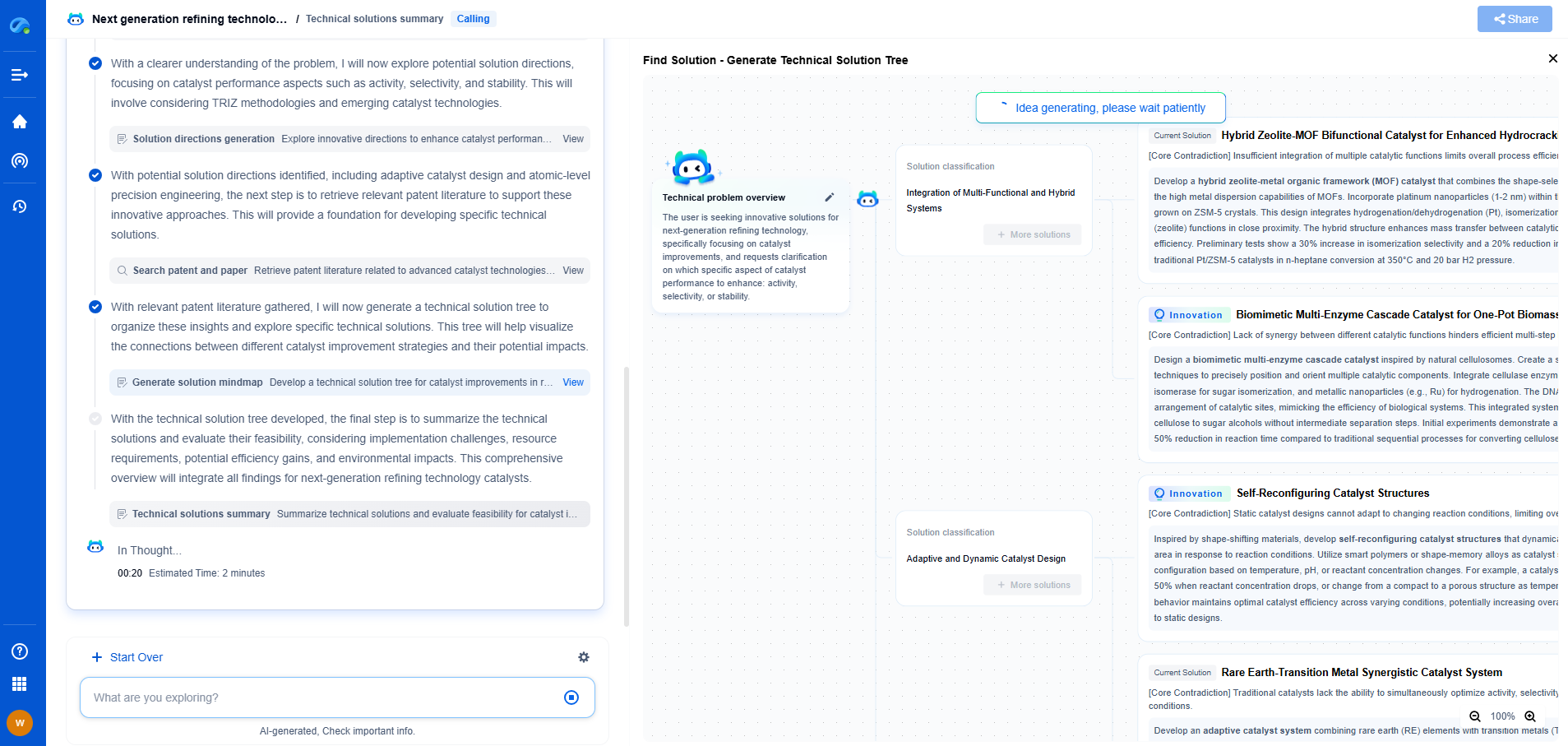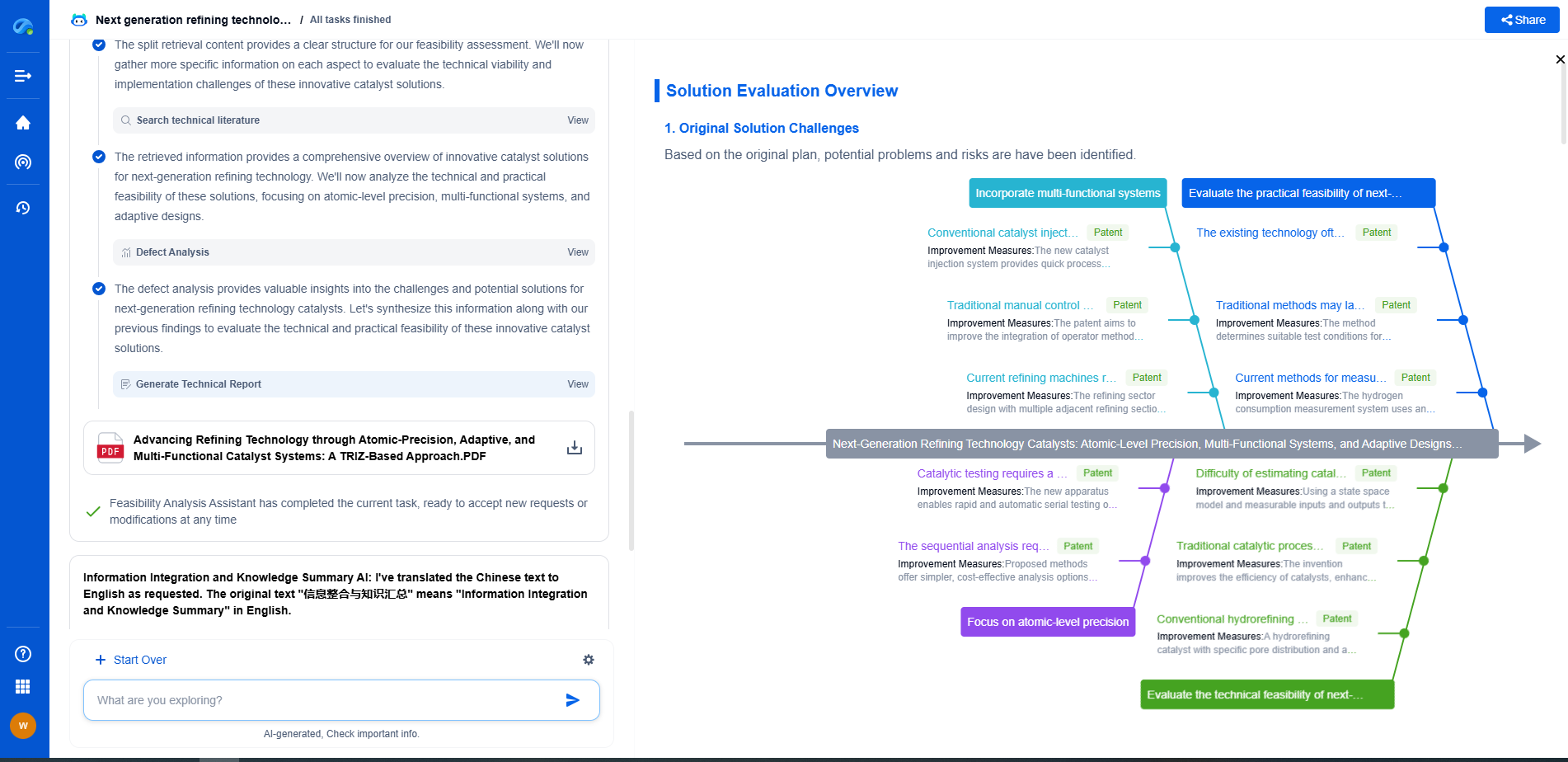Choosing between 6-axis and SCARA robots for assembly
JUN 26, 2025 |
In the world of automation, the choice between different robotic systems can significantly impact the efficiency, cost-effectiveness, and overall success of manufacturing and assembly processes. Among the most frequently considered options are 6-axis robots and Selective Compliance Assembly Robot Arm (SCARA) robots. Understanding the strengths and limitations of each type is crucial for making an informed decision that aligns with your specific assembly requirements.
Understanding 6-Axis Robots
6-axis robots are renowned for their versatility and flexibility. With six degrees of freedom, these robots can move in multiple directions, allowing for complex and intricate tasks. Their ability to reach hard-to-access areas makes them ideal for applications that require precision and adaptability.
Strengths of 6-Axis Robots
The most notable advantage of 6-axis robots is their versatility. They can perform a wide range of tasks, from simple pick-and-place operations to more complex applications such as welding, painting, and assembly. The robots' full range of motion allows them to maneuver around obstacles and maintain high levels of precision and accuracy. Additionally, 6-axis robots are capable of handling various payloads, which makes them suitable for both light and heavy-duty tasks.
Limitations of 6-Axis Robots
Despite their versatility, 6-axis robots can be more expensive than their SCARA counterparts. They also require a larger footprint, which might not be ideal for facilities with limited space. The complexity of their programming and setup can also be challenging, especially for operations that do not require such an advanced level of flexibility.
Exploring SCARA Robots
SCARA robots are designed for high-speed, high-precision applications. They offer selective compliance, which means they can bend in specific directions, making them optimal for tasks requiring horizontal movement. Their unique design allows them to maintain rigidity in the vertical direction while providing flexibility in the horizontal plane.
Strengths of SCARA Robots
SCARA robots excel in speed and precision, making them perfect for assembly tasks that require quick, repeatable motions. Their compact design and small footprint make them suitable for environments where space is at a premium. SCARA robots are typically easier to program and operate, thus reducing the setup time and associated costs. Furthermore, their design makes them ideal for tasks such as pick-and-place, packaging, and certain types of assembly operations.
Limitations of SCARA Robots
While SCARA robots are excellent for specific tasks, their limited range of motion compared to 6-axis robots can be a drawback for more complex operations. They are not as versatile and cannot handle as many diverse tasks, which might limit their applicability for some manufacturing processes. Additionally, SCARA robots generally handle lighter payloads compared to 6-axis robots.
Comparing Application Scenarios
When choosing between 6-axis and SCARA robots, it's important to consider the specific requirements of your assembly process. If your application involves complex tasks with varying orientations and requires maneuvering around obstacles, a 6-axis robot may be the better choice due to its flexibility and range of motion. However, if your assembly process involves repetitive, high-speed tasks that require precision on a horizontal plane, a SCARA robot could offer superior performance and efficiency.
Cost Considerations
Cost is a critical factor in any decision-making process. Generally, SCARA robots are more affordable than 6-axis robots, both in terms of initial investment and operational costs. The simpler design and ease of programming contribute to lower maintenance and training expenses. However, for operations that demand the flexibility and capabilities of 6-axis robots, the higher cost could be justified by the potential increase in productivity and adaptability.
Conclusion
Selecting between 6-axis and SCARA robots requires a thorough evaluation of your specific assembly needs, budget constraints, and operational goals. Both types of robots offer unique advantages that can enhance efficiency and productivity in the right context. By carefully considering the technical specifications, application scenarios, and cost implications, you can make a well-informed decision that optimizes your assembly processes and contributes to the overall success of your manufacturing operations.
Ready to Redefine Your Robotics R&D Workflow?
Whether you're designing next-generation robotic arms, optimizing manipulator kinematics, or mining patent data for innovation insights, Patsnap Eureka, our cutting-edge AI assistant, is built for R&D and IP professionals in high-tech industries, is built to accelerate every step of your journey.
No more getting buried in thousands of documents or wasting time on repetitive technical analysis. Our AI Agent helps R&D and IP teams in high-tech enterprises save hundreds of hours, reduce risk of oversight, and move from concept to prototype faster than ever before.
👉 Experience how AI can revolutionize your robotics innovation cycle. Explore Patsnap Eureka today and see the difference.
- R&D
- Intellectual Property
- Life Sciences
- Materials
- Tech Scout
- Unparalleled Data Quality
- Higher Quality Content
- 60% Fewer Hallucinations
Browse by: Latest US Patents, China's latest patents, Technical Efficacy Thesaurus, Application Domain, Technology Topic, Popular Technical Reports.
© 2025 PatSnap. All rights reserved.Legal|Privacy policy|Modern Slavery Act Transparency Statement|Sitemap|About US| Contact US: help@patsnap.com

